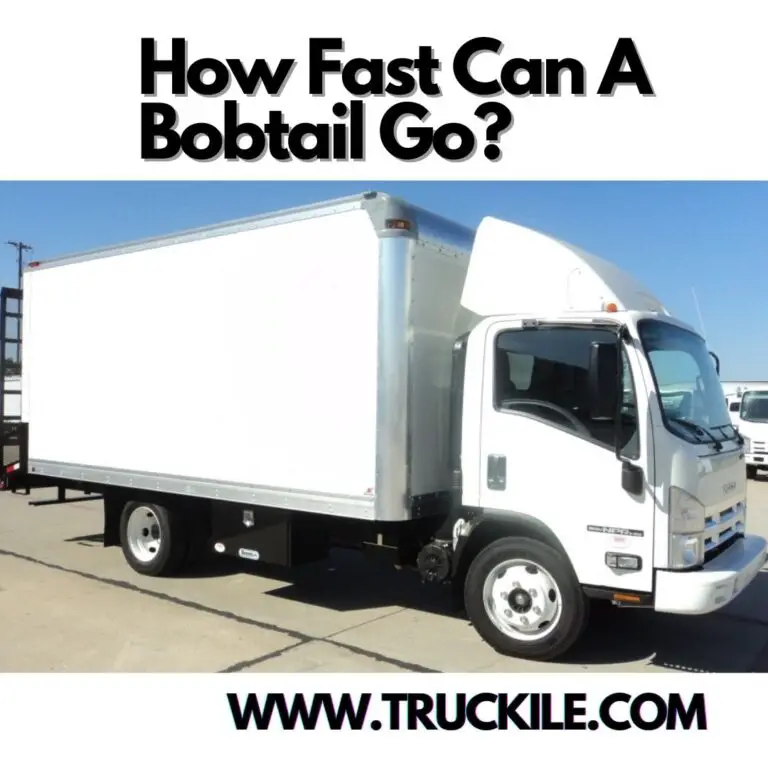Are Cabovers Legal In The US?
If you come across someone — who lives in the United States — asking this question, we want you to know that it’s normal. Nobody wants to receive a fine, because of being misinformed. In this article, we’ll cover the response to Are Cabovers legal in the US? — and a few details about Cabover trucks.
Are Cabovers Legal In The US?
They are not illegal, just no longer produced for the OTR market. There are some still on the road.
What Exactly Is A Cabover Truck?
Cabover trucks, which are also referred to as COE (cab over engine), are essentially and basically a style of big rig truck without a hood. The word we can use to describe the semi’s nose is “flat,” and as for the truck cab, it sits right on top of the steering axle and diesel engine. As a result of the regulations for length, in its day, this rig’s style was quite popular..
The truck’s cabover style took complete advantage of the length laws of the trucking industry, in effect at that period of time. Now, the truck cab is placed right over the motor — and this placement saved a few lengths. For those who really want to be in the know of the overall length of trailer and truck — from the year 1956 to 1976, the length could stay at a maximum of 65′.
They were so tough to successfully get out of after driving for a really long distance, and in them had a ride — that ride was firm. In order to get out, the trucker had no other choice but to less or more “back out of the cab door” while ensuring you find a railing on the door and firmly hanging onto it. Drivers had to ensure that they’re careful of foot placement — or else, what you’ll see is that they’ve fallen to the ground.
The Tarzan Exit
Do you remember the exit style called the “Tarzan Style Exit?”
The driver would have a hold of the outer rail and the next thing would be to swing out and down. It was an easy thing for the younger drivers, but for those drivers who are of age, it wasn’t quite so easy.
Why Did Cabovers Lose Popularity?
- In 1976, there was allowed another length of 9′ for a maximum 75′ allowance. So, the issue around “length” was not so relevant anymore.
- Looking at the length laws — since those laws have recorded a good number of changes, which includes allowing longer units on the road, it’s no longer available the same advantages attached to this very style of truck.
- The large carriers that were known as the big buyers of the Cabover, began to opt for the conventional style rig, and there was a rapid fall of the bottom, a fall out of the market for them in North America. This led to the fall in terms of the popularity of these trucks.
- The design of the cabover truck is very much outdated for the North American highway infrastructure. But, they remain nothing but the gold standard in places like Japan, Australia, and Europe. In the just listed countries, truck manufacturers still make this very body style as their laws around lengths are, till today, quite rigid — and the cabover style allows for the length of the trailer to be maxed out.
Why The Nostalgia For The Cabover?
It was common, at a time, where you’d see these rigs rolling down the highways. Today, it’s quite rare to lay your eyes on a working cabover truck on the road. We have heard people talk about the number of amazing ones that were rebuilt, re-finished, and even restored to a brand new condition. There’s a truck style called the “retro truck style.” This style is taking a position at the surface again for particular working applications.
Let’s look at the truck shows; you’ll be able to find these trucks in truck shows — because of how popular they’re becoming. It’s incredible to know that a lot of truckers out there still appreciate these types of trucks. There are tons of memories attached to the old models, the old models of cabover trucks. Many truck drivers and the ones who are retired lament sometimes about the classic cabover truck models — the models that, at a time, were king of the highways of North America.
We can’t deny the fact that the cabover truck is truly an icon. It’s one truck that represents the trucking days a lot of us long for, in the recent world of trucking, that’s extremely complex with its mounds of irrelevant regs, rules, and guidelines. Those old-school cabover trucks — whether Kenworth, Peterbilt, Freightliner, White, GMC, Ford, Diamond Reo, or old Crackerbox — meant good memories, open roads, simplicity, freedom, and also series of backaches.
In addition, they go into the past and bring back those memories that have to do with when the industry ensured that truckers are paid according to their worth — and the professional got the respect of the public.
Quirks And Perks Of The Cabover
1. Visibility: The fact, which is a simple fact, is that these various big rigs did not have a good increased level of visibility for the driver. There are not a lot of blind spots, as well. Cabover had really great visibility and in terms of look, they have that of highway trucks, because of their sheer height.
2. Maneuverability: The style that the old semi trucks come with is incredibly and hugely maneuverable. At the time when you have to back in to loading docks and winding through really heavy traffic — there’s nothing you can bring to compare a cabover truck.
There’s a shortened wheelbase that does great in allowing for this tight turning radius. For this particular reason, they still uphold their popularity in Europe, where you’d see that the roadways generally are narrower, with very tight clearances, even more congested than in North America.
Related:
3. The Sleeper Bunk: In order for you to get inside the sleeper bunk, the rig’s driver would have to crawl right through a hole. So, literally, it’s compulsory that the trucker stand up on the seat of the truck and gently crawl over the engine, which you’ll find between the seats.
Anytime the driver needs to get anything at all from the bunk, he still has to follow the same process. When sitting in the seat of the driver, it’s quite uncomfortable to want to reach into the sleeper in a bid to grab something.
4. Comfort: During the time of the early years, cabover trucks were not so comfortable. Many truckers, at that time, would lay their complaint around the fact that the ride was really rough — mostly because of the shortened wheelbase.
Comfort is seen as a really huge issue, especially for those long-haul trucking. When the manufacturers of the truck decided to ensure that there’s an increase in the driver’s comfort inside these trucks, their prices skyrocket, too. As a result of the little comfort, the price began to dwindle. You know, then, a conventional style rig had a price almost similar to these flat-nose trucks — and they were known to be more comfortable.
5. Noisy: They also produce a lot of noise — louder than the long-hood rigs — as the driver’s seat was positioned right above the engine, making it impossible for them to not seat above the engine.
6. Maintenance And Repair: How do you repair a cabover? You can accomplish this by simply tilting the entire cab forward. This ensures that one can get good access to the motor for repair and maintenance. However, there existed a downside that also accompanied this accessibility. When the cab was tipped, anything at all inside the truck and also the sleeper berth that was not glued down would fall onto the truck’s windshield.
7. Safety: The rig of a cabover is not as safe as the rig mentioned in some paragraphs above — a long-hood rig. If an accident occurs, the driver doesn’t have anything he can call “a protection.” The driver would be the very first person at a head-on accident scene. It’s very dangerous for a cabover driver to be involved in a head-on crash.
The cabovers of today, the modern cabovers, are built with more structural safety features in place in order to protect the driver — if he ever gets involved in a crash.
Frequently Asked Questions (FAQs)
What Are Cabovers?
Cab-over, also known as a cab over engine (COE), cab forward (U.S.), flat nose (Canada), or forward control (UK), is a body style of truck, bus, or van that has a vertical front, “flat face” or a semi-hood, with the cab of the truck sitting above (or forward of) the front axle.
Credit: Wikipedia
Will Cabover Trucks Come Back?
Shippers are always going to want longer trailers and smaller trucks. Shippers want bigger trailers all the time, so it could be that cabover trucks stand a chance for a comeback. Unfortunately, you just can’t get some of the conventional trucks easily around the corner and into the loading docks.
Are Cabovers legal In The US – Conclusion
As a recap of the response we gave to the question — Are Cabovers Legal In The US? — we stated that:
They are not illegal, just no longer produced for the OTR market. There are some still on the road.
Thanks for reading this article, Are Cabovers Legal In The US.

Joe lives and breathes cars and trucks. After many years working in the Auto industry, he decided that it is only right to share his knowledge with the public. As a qualified expert in trucks and cars, he started working for Truckile.com and is the main editor and publisher.



